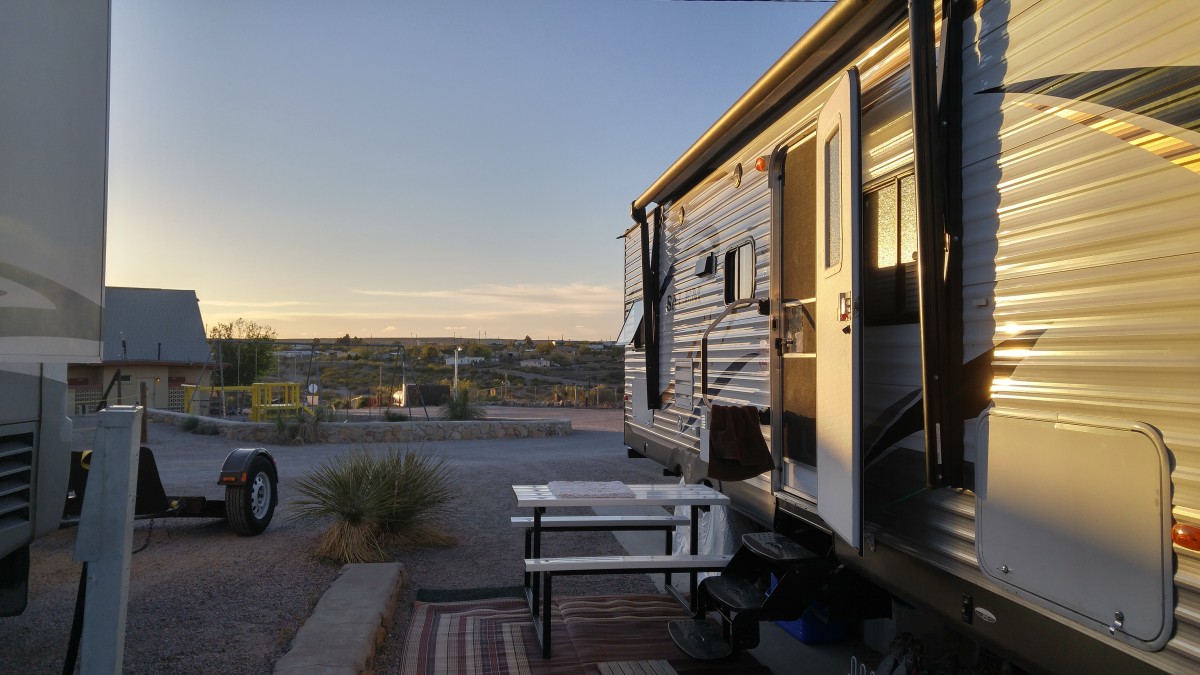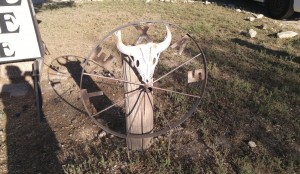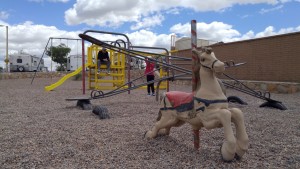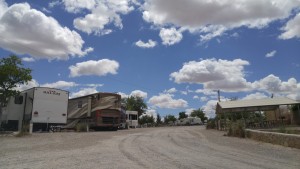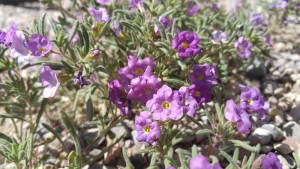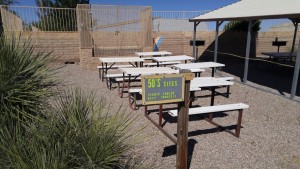Along the I-10, just west of San Antonio, Texas, begins the journey into the desert. We — Scot and I — didn’t realize how much we had missed it, as the small rock mounds and tiny mesas of San Antonio melted away into dusty flats, emerging later as glorious, cacti-dotted, mountainous landscapes at an incline. Through West Texas, there are infrequent stopping points, until the highway curves north for awhile, passing up and through El Paso to Las Cruces, New Mexico, to Tucson and Phoenix, Arizona, over to Riverside, California, ending in L.A. We had vowed to embrace Texas on our way to Southern California. This leg of the journey was our last through Texas, and we are happy to have fulfilled it.
There isn’t that much to say about this part of the U.S., at least in terms of activities or destinations of the man-made kind. Attempts at prolific ranching and successful agriculture seemed to have waned, as well as most industry of any kind. There are lots of rusty and dilapidated buildings, worn-off signs, vacant billboards that cows use for shade and Western souvenir shops loaded with gems, cowboy hats and key chains.
But we didn’t pass through this territory for eye candy or activities, and what is lacking in the man-made variety is overwhelmed by the natural beauty. We took on West Texas and the southernmost deserts for the rest and experience — for the sake of them. In this part of the country, travelers have few options other than traversing the I-10, stopping when they can or should and letting the road and wilderness help our minds expand. Without the mind-numbing traffic of busy cities and criss-crossing interstates, the southern desert traveler can put the journey on cruise, even if for just a while.
We stopped in Fort Stockton — a long drive for us out of San Antonio, but we made it. A former KOA, our campground catered to overnighters with its pull-through sites suitable to stay hitched, as well as the on-site restaurant that served local meats and recipes for breakfast and dinner. The surrounding area was flat and dusty, but the pool made up for that. The mourning doves cooed and the starts were bright under that West Texas sky. “Welcome to the desert” it said.
Then we made our way to Las Cruces, New Mexico, passing through busy and abundant El Paso, from which one can see Northern Mexico. El Paso seemed to go on forever, but it is only about twenty minutes from Las Cruces. There we settled at a beautiful KOA with spectacular views of the city and mountains. After two days of hardcore driving, we needed a break. The Las Cruces KOA was a great place to rest for a week and relish the gifts of Mother Nature.
There isn’t much to do in Las Cruces either. An offshoot of El Paso, it is a working class town. Most folks are employed by the hospital, the university, the public schools, the city or NASA. There is a cool, modern public library and a few parks — one along the Rio Grande — but mostly Las Cruces seems to experience urban planning confusion. Dated and architecturally funky, nothing lured us to it. However, the local food scene was dripping with authentic Mexican and New Mexican options, like hatch chilies and shops for burritos and doughnuts — and we indulged in the them. We also took a daytrip to White Sands National Monument, a place we rank among the best experiences on this journey.
Las Cruces and West Texas are naturally beautiful, and there are many more designated natural areas to visit in this part of the country. It may require quite a drive or a willingness to move off the I-10 and venture even farther south or west or north, but it is all quite worth it.
But as we change from wet and tropical to dry and desert; from busy and abundant to wild and wide open; to places where man and Mother Nature still wrestle for control, we just go with the flow. We are like the tumbleweed, “… once it is mature and dry, [it] detaches from its root or stem, and tumbles away … where the frequent wind and the open environment permit rolling without prohibitive obstruction.” (Wikipedia)
Our time in this part of the country has been fulfilling and embracing, calming and quiet. It has been really good. We like the desert. It provides life and resources unnoticed by the unaware. It uses what it needs and adapts when supplies are low. I guess its our style and is worth the travel if you’ve got the time.
- Fort Stockton, Texas. Welcome.
- View of Doña Ana Mountains from the Las Cruces KOA.
- Rain Approaching. Las Cruces, NM.
